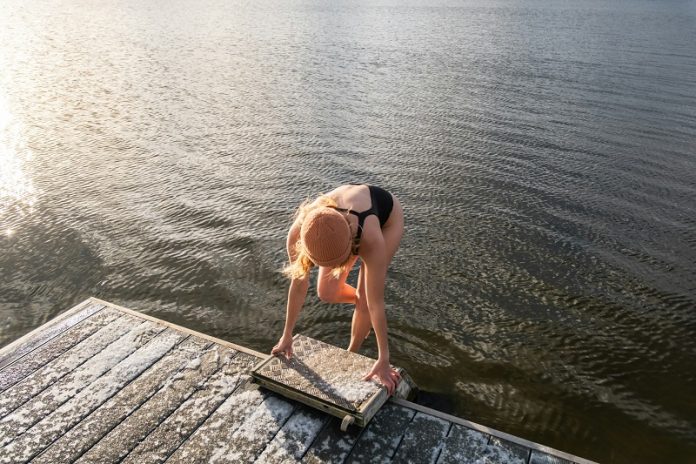
Cold-water plunges are having a moment.
From celebrities like Harry Styles and Lady Gaga to athletes and influencers, more and more people are jumping into freezing water on purpose.
But let’s be honest—it’s not exactly fun. For first-timers, it can be a shock. People often gasp, squeal, or even panic when their bodies hit the icy water.
Dr. Kevin Kemp-Smith, an Assistant Professor at Bond University, still finds cold-water dips stressful.
But his own struggles got him thinking: why do people willingly put themselves through this discomfort?
Together with his colleague Dr. Mathew Ono, he looked into it. They reviewed 13 international studies on cold-water immersion, or CWI, and published their findings in the International Journal of Wellbeing.
The research showed that even though it’s unpleasant at first, people keep doing it for good reasons.
Cold-water immersion can lift your mood, reduce stress, and even ease symptoms of depression. It also helps people feel more present and aware of their bodies, which can lead to better overall well-being.
Many people also enjoy the social side.
Group swims and shared icy experiences help them feel more connected to others, which is great for mental health. The challenge of facing cold water can also help people grow.
It builds resilience and the ability to handle stress. And when done in nature—like a lake or the sea—it helps people reconnect with the outdoors, which is known to improve mental health.
In the studies reviewed, people were exposed to water temperatures ranging from 4°C to nearly 20°C, with the average around 13.8°C. Most did cold dips between two and eight times a month, staying in the water for 5 to 20 minutes.
Dr. Kemp-Smith says he relates to the findings. He admits the feeling after a cold plunge is addictive, thanks to the release of feel-good chemicals like dopamine that can last for hours.
Trying it at home can be as simple as adding bags of ice to your bathtub. Portable tubs start at about $100, while fancy ones with filters can cost thousands.
Nature is the cheapest option, though in places like the Gold Coast, the ocean may not get cold enough. Melbourne and Hobart offer colder waters for those who want the real deal.
Experts warn that beginners should talk to their doctor first. Cold water can shock the body, especially the heart, and staying in too long can lead to hypothermia—especially for people with very low body fat. To stay safe, it’s best to start slow with just a few short sessions each week.
So while cold-water plunges may be uncomfortable, the mental and physical boost keeps people coming back for more.
If you care about wellness, please read studies about how ultra-processed foods and red meat influence your longevity, and why seafood may boost healthy aging.
For more health information, please see recent studies that olive oil may help you live longer, and vitamin D could help lower the risk of autoimmune diseases.
Source: Bond University.



